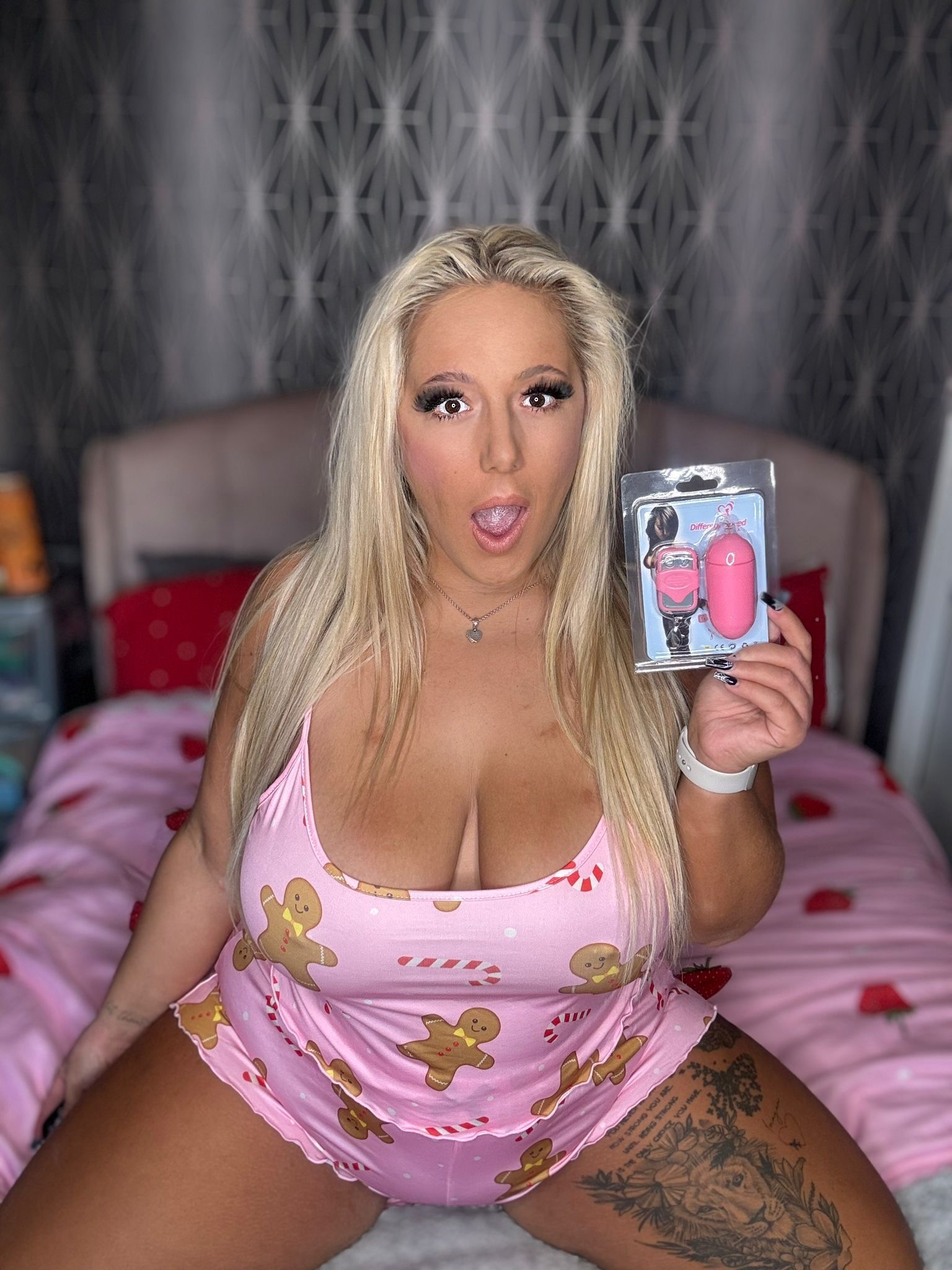Sexual Fluidity: Embracing Change In Attraction Over Time
Understanding Sexual Fluidity

Sexual fluidity refers to the capacity for an individual’s sexual orientation, or attractions to others, to evolve and change over time. This means that a person’s preferences may shift, expand, or contract throughout their life, influenced by various factors such as personal experiences, emotional states, and even societal contexts. Recognizing and understanding this fluidity is crucial for fostering acceptance and respect for the diverse spectrum of human sexuality.
Definition and Characteristics
Sexual fluidity acknowledges that attraction isn’t static and can evolve over a person’s lifetime. It recognizes that individuals may experience shifts in who they are attracted to, whether it’s an increase or decrease in attraction to certain genders or a broadening or narrowing of their preferences. This fluidity encompasses a wide range of experiences, from gradual changes to more dramatic shifts in orientation.
Factors influencing sexual fluidity can be multifaceted and complex. Personal growth, self-discovery, relationship dynamics, and even life events can contribute to changes in attraction. It’s important to remember that there is no right or wrong way to experience sexuality, and embracing fluidity allows individuals to explore their authentic selves without feeling confined by rigid labels.
Factors Influencing Sexual Fluidity
Understanding sexual fluidity involves recognizing that an individual’s attractions are not fixed but can evolve over time. It acknowledges that people may experience shifts in who they are attracted to, whether it’s a change in intensity of attraction, exploration of new identities, or a shift towards different genders.
Several factors contribute to sexual fluidity. Personal growth and self-discovery often lead individuals to explore their identities more deeply, which can result in changes in attraction. Relationship dynamics can also play a role, as experiences with partners can shape an individual’s understanding of themselves and their desires. Life events, such as transitions or personal challenges, can trigger introspection and shifts in focus, potentially influencing attractions.
Moreover, societal influences and cultural norms can impact how individuals understand and express their sexuality. Exposure to diverse perspectives and acceptance of fluidity within a community can create a space where people feel comfortable exploring and expressing their evolving attractions without fear of judgment.
Distinguishing Sexual Fluidity from Other Concepts
Sexual fluidity is distinct from other concepts related to sexual orientation, such as bisexuality or pansexuality. While these terms describe orientations that encompass attraction to multiple genders, sexual fluidity emphasizes the *change* in those attractions over time.
Bisexual individuals may consistently experience attraction to two or more genders, while fluid individuals’ attractions may shift and evolve. Pansexual individuals are attracted to people regardless of their gender identity, while a sexually fluid person’s attractions may change even within a particular gender group.
It’s also important to differentiate sexual fluidity from simple experimentation. Experimentation involves exploring different types of relationships or attractions without necessarily signifying a lasting change in orientation. Sexual fluidity implies a genuine evolution in one’s sense of self and attraction, often accompanied by introspection and self-discovery.
The Experience of Sexual Fluidity
Sexual fluidity is the natural ebb and flow of attraction throughout a person’s life. It acknowledges that who we are drawn to can change over time, influenced by personal growth, experiences, and evolving understandings of ourselves.
Personal Journeys and Expressions
Sexual fluidity refers to the capacity for an individual’s sexual orientation or attractions to evolve and change over time. It recognizes that a person’s preferences may shift, expand, or contract throughout their life, influenced by various factors such as personal experiences, emotional states, and societal contexts.
This fluidity encompasses a wide range of experiences, from gradual changes to more dramatic shifts in orientation. Individuals may find their attractions become stronger or weaker for certain genders, explore new identities, or experience a broadening or narrowing of their preferences.
Factors influencing this fluidity can be multifaceted and complex. Personal growth, self-discovery, relationship dynamics, and even life events can contribute to changes in attraction. It’s important to remember that there is no right or wrong way to experience sexuality, and embracing fluidity allows individuals to explore their authentic selves without feeling confined by rigid labels.
Understanding sexual fluidity involves recognizing that an individual’s attractions are not fixed but can evolve over time. It acknowledges that people may experience shifts in who they are attracted to, whether it’s a change in intensity of attraction, exploration of new identities, or a shift towards different genders.
Several factors contribute to this fluidity. Personal growth and self-discovery often lead individuals to explore their identities more deeply, which can result in changes in attraction. Relationship dynamics can also play a role, as experiences with partners can shape an individual’s understanding of themselves and their desires. Life events, such as transitions or personal challenges, can trigger introspection and shifts in focus, potentially influencing attractions.
Moreover, societal influences and cultural norms can impact how individuals understand and express their sexuality. Exposure to diverse perspectives and acceptance of fluidity within a community can create a space where people feel comfortable exploring and expressing their evolving attractions without fear of judgment.
Sexual fluidity is distinct from other concepts related to sexual orientation, such as bisexuality or pansexuality. While these terms describe orientations that encompass attraction to multiple genders, sexual fluidity emphasizes the *change* in those attractions over time. Bisexual individuals may consistently experience attraction to two or more genders, while fluid individuals’ attractions may shift and evolve. Pansexual individuals are attracted to people regardless of their gender identity, while a sexually fluid person’s attractions may change even within a particular gender group.
It’s also important to differentiate sexual fluidity from simple experimentation. Experimentation involves exploring different types of relationships or attractions without necessarily signifying a lasting change in orientation. Sexual fluidity implies a genuine evolution in one’s sense of self and attraction, often accompanied by introspection and self-discovery.

Common Experiences and Challenges
Sexual fluidity refers to the capacity for an individual’s sexual orientation, or attractions to others, to evolve and change over time. It recognizes that a person’s preferences may shift, expand, or contract throughout their life, influenced by various factors such as personal experiences, emotional states, and societal contexts.
This fluidity encompasses a wide range of experiences, from gradual changes to more dramatic shifts in orientation. Individuals may find their attractions become stronger or weaker for certain genders, explore new identities, or experience a broadening or narrowing of their preferences.
Factors influencing this fluidity can be multifaceted and complex. Personal growth, self-discovery, relationship dynamics, and even life events can contribute to changes in attraction. It’s important to remember that there is no right or wrong way to experience sexuality, and embracing fluidity allows individuals to explore their authentic selves without feeling confined by rigid labels.
Understanding sexual fluidity involves recognizing that an individual’s attractions are not fixed but can evolve over time. It acknowledges that people may experience shifts in who they are attracted to, whether it’s a change in intensity of attraction, exploration of new identities, or a shift towards different genders.
Several factors contribute to this fluidity. Personal growth and self-discovery often lead individuals to explore their identities more deeply, which can result in changes in attraction. Relationship dynamics can also play a role, as experiences with partners can shape an individual’s understanding of themselves and their desires. Life events, such as transitions or personal challenges, can trigger introspection and shifts in focus, potentially influencing attractions.
Moreover, societal influences and cultural norms can impact how individuals understand and express their sexuality. Exposure to diverse perspectives and acceptance of fluidity within a community can create a space where people feel comfortable exploring and expressing their evolving attractions without fear of judgment.
Sexual fluidity is distinct from other concepts related to sexual orientation, such as bisexuality or pansexuality. While these terms describe orientations that encompass attraction to multiple genders, sexual fluidity emphasizes the *change* in those attractions over time. Bisexual individuals may consistently experience attraction to two or more genders, while fluid individuals’ attractions may shift and evolve. Pansexual individuals are attracted to people regardless of their gender identity, while a sexually fluid person’s attractions may change even within a particular gender group.
It’s also important to differentiate sexual fluidity from simple experimentation. Experimentation involves exploring different types of relationships or attractions without necessarily signifying a lasting change in orientation. Sexual fluidity implies a genuine evolution in one’s sense of self and attraction, often accompanied by introspection and self-discovery.
Embracing Sexual Fluidity
Sexual fluidity recognizes that attraction is not static; it evolves and changes over time. This means individuals may experience shifts in who they are drawn to, whether it’s an increase or decrease in attraction to certain genders or a broadening or narrowing of their preferences. Embracing this fluidity allows for a deeper understanding and acceptance of the diverse spectrum of human sexuality.
Self-Acceptance and Exploration
Sexual fluidity acknowledges that attraction isn’t static and can evolve over a person’s lifetime. It recognizes that individuals may experience shifts in who they are attracted to, whether it’s an increase or decrease in attraction to certain genders or a broadening or narrowing of their preferences. This fluidity encompasses a wide range of experiences, from gradual changes to more dramatic shifts in orientation.
Several factors can contribute to this evolution, including personal growth, self-discovery, relationship dynamics, and even life events. It’s important to remember that there is no right or wrong way to experience sexuality, and embracing fluidity allows individuals to explore their authentic selves without feeling confined by rigid labels.
Understanding sexual fluidity involves recognizing that an individual’s attractions are not fixed but can evolve over time. It acknowledges that people may experience shifts in who they are attracted to, whether it’s a change in intensity of attraction, exploration of new identities, or a shift towards different genders.
Embracing sexual fluidity means creating a space where individuals feel comfortable exploring their evolving attractions without fear of judgment. This includes challenging societal norms that promote rigid definitions of sexuality and fostering an environment where diverse expressions of attraction are celebrated.
Ultimately, sexual fluidity is about self-acceptance and authenticity. It’s about recognizing the dynamic nature of human experience and allowing ourselves to grow and evolve alongside our changing desires and attractions.
Communication and Honesty in Relationships
Sexual fluidity acknowledges that attraction isn’t static; it evolves and changes over time. This means individuals may experience shifts in who they are drawn to, whether it’s an increase or decrease in attraction to certain genders or a broadening or narrowing of their preferences. Embracing this fluidity allows for a deeper understanding and acceptance of the diverse spectrum of human sexuality.
Open and honest communication is crucial within relationships when navigating sexual fluidity. Partners need to create a safe space where they can openly discuss their evolving attractions, feelings, and needs without fear of judgment or rejection. Active listening, empathy, and willingness to understand each other’s perspectives are essential for maintaining a healthy and supportive dynamic.
Honesty is paramount in fostering trust and intimacy within a relationship. It involves being truthful about one’s desires, boundaries, and any changes in attraction. When partners feel safe sharing their authentic selves, it strengthens their bond and allows them to navigate complexities together.
Resources and Support Networks
Understanding sexual fluidity is the first step towards embracing it. Sexual fluidity refers to the capacity for an individual’s attractions to evolve and change over time. This means that a person’s preferences may shift, expand, or contract throughout their life, influenced by various factors such as personal experiences, emotional states, and societal contexts.
Recognizing this fluidity is crucial for fostering acceptance and respect for the diverse spectrum of human sexuality. It allows individuals to explore their identities authentically without feeling confined by rigid labels.
If you identify as sexually fluid, remember that you are not alone. There are many resources available to support your journey of self-discovery and exploration:
- Online Communities and Forums: Connecting with others who share similar experiences can provide valuable support, understanding, and a sense of belonging.
- Support Groups: Many organizations offer in-person or online support groups specifically for LGBTQ+ individuals, including those who identify as sexually fluid. These groups provide a safe space to share your experiences, ask questions, and connect with others.
- Therapists Specializing in Sexuality: Seeking guidance from a therapist experienced in sexual health can be incredibly beneficial. They can help you navigate complex emotions, explore your identity, and develop healthy coping mechanisms.
- Educational Resources: Numerous websites, books, and articles offer information about sexual fluidity, LGBTQ+ issues, and related topics.
Remember, embracing sexual fluidity is a journey of self-discovery and exploration. Be patient with yourself, celebrate your authenticity, and know that there are people who understand and support you along the way.
Societal Perceptions and Attitudes
Societal perceptions and attitudes towards sexuality have evolved over time, yet many individuals still face prejudice and misunderstanding. The concept of sexual fluidity, which acknowledges the dynamic nature of attraction and its potential for change throughout a person’s life, challenges traditional binary notions of sexuality.
Stigma and Misconceptions
Societal perceptions and attitudes toward sexual fluidity vary greatly. While there is growing acceptance and understanding of diverse sexual orientations, some individuals and communities may still hold rigid beliefs about sexuality as fixed and unchanging.
Misconceptions and stigma surrounding sexual fluidity can lead to negative consequences for those who identify with it. Some common misconceptions include the belief that sexual fluidity is a phase or a choice, rather than a genuine aspect of a person’s identity. Others may equate it with promiscuity or lack of commitment, which is inaccurate.
These stereotypes can contribute to feelings of isolation, shame, and fear of disclosure for individuals who are sexually fluid. It can also create barriers to open communication within relationships and hinder access to support and understanding.
Overcoming these societal hurdles requires ongoing education, open dialogue, and a commitment to challenging prejudice. Promoting accurate information about sexual fluidity, normalizing diverse expressions of sexuality, and fostering empathy and respect are crucial steps toward creating a more inclusive and accepting society.
Progress Towards Acceptance and Understanding
Societal perceptions and attitudes towards sexuality have evolved over time, yet many individuals still face prejudice and misunderstanding. The concept of sexual fluidity, which acknowledges the dynamic nature of attraction and its potential for change throughout a person’s life, challenges traditional binary notions of sexuality.
Progress toward acceptance and understanding of sexual fluidity is ongoing and multifaceted. Some positive developments include:
- Increased visibility: Media representation of sexually fluid characters has become more prevalent, helping to raise awareness and normalize diverse experiences.
- Growing research: Academic studies are shedding light on the complexities of sexual fluidity, contributing to a better understanding of its nuances.
- Changing societal norms: Younger generations tend to be more accepting of fluid identities and non-binary gender expressions.
- Activism and advocacy: LGBTQ+ organizations continue to push for legal protections and social change, creating a more inclusive environment.
Despite these advancements, challenges remain. Some individuals may still struggle with internalized homophobia or biphobia, leading to self-doubt or fear of rejection. Societal stigma can also create barriers to accessing healthcare, support services, and even employment opportunities for sexually fluid individuals.
Ultimately, fostering a more accepting and inclusive society requires continued education, empathy, and open communication. It’s essential to challenge stereotypes, promote accurate information about sexual fluidity, and create safe spaces where individuals can express their identities authentically without fear of judgment or discrimination.
Future Directions and Research
Future research on sexual fluidity holds immense potential to deepen our understanding of human sexuality and foster greater inclusivity. Exploring the biological, psychological, and social factors that contribute to fluidity will provide valuable insights into the complexities of attraction and identity formation.
Further investigation is needed to examine the impact of societal norms and cultural contexts on the experience of sexual fluidity. Understanding how different cultures perceive and respond to fluid identities can illuminate the diverse ways in which sexuality is expressed and understood across the globe.
Qualitative research involving personal narratives and lived experiences of sexually fluid individuals can offer rich insights into their journeys of self-discovery, relationship dynamics, and the challenges they may face.
Moreover, research should address the intersectionality of sexual fluidity with other aspects of identity, such as race, gender, and socioeconomic status. Understanding how these intersecting identities shape experiences of fluidity can lead to more nuanced and comprehensive understandings of human sexuality.
Finally, it is crucial to conduct research that is inclusive and ethical, prioritizing the voices and perspectives of sexually fluid individuals while protecting their privacy and well-being.
Evolving Definitions and Understandings
Future research on sexual fluidity holds immense potential to deepen our understanding of human sexuality and foster greater inclusivity. Exploring the biological, psychological, and social factors that contribute to fluidity will provide valuable insights into the complexities of attraction and identity formation.
Further investigation is needed to examine the impact of societal norms and cultural contexts on the experience of sexual fluidity. Understanding how different cultures perceive and respond to fluid identities can illuminate the diverse ways in which sexuality is expressed and understood across the globe.
Qualitative research involving personal narratives and lived experiences of sexually fluid individuals can offer rich insights into their journeys of self-discovery, relationship dynamics, and the challenges they may face.
Moreover, research should address the intersectionality of sexual fluidity with other aspects of identity, such as race, gender, and socioeconomic status. Understanding how these intersecting identities shape experiences of fluidity can lead to more nuanced and comprehensive understandings of human sexuality.
Finally, it is crucial to conduct research that is inclusive and ethical, prioritizing the voices and perspectives of sexually fluid individuals while protecting their privacy and well-being.

The Importance of Inclusive Research
The future directions and research in understanding sexual fluidity are incredibly promising. Expanding our knowledge in this field has significant implications for promoting individual well-being and societal inclusivity.
A key area of focus is understanding the neurological and biological underpinnings of sexual fluidity. Research exploring brain structures, hormonal fluctuations, and genetic factors could shed light on the biological mechanisms contributing to shifts in attraction over time.
Further research is needed to investigate the interplay between psychological and social factors influencing sexual fluidity. Exploring how personality traits, self-esteem, attachment styles, and cultural norms shape an individual’s experience of fluid attraction can provide valuable insights into the complex dynamics at play.
Longitudinal studies tracking individuals over extended periods are essential for understanding the trajectory of sexual fluidity. Examining how attractions evolve and change throughout different life stages can reveal patterns, triggers, and influencing factors.
Including diverse populations in research is crucial for creating a more comprehensive understanding of sexual fluidity across cultures, ethnicities, and gender identities. Exploring experiences within various social contexts will illuminate the multifaceted nature of fluidity.
Developing culturally sensitive interventions and support resources tailored to the needs of sexually fluid individuals is paramount. This includes providing educational materials that promote understanding, offering therapy options that address unique challenges, and creating safe spaces for community building and connection.
Inclusive research on sexual fluidity has significant implications for creating a more equitable and accepting society. By fostering understanding, reducing stigma, and promoting inclusivity, we can empower individuals to embrace their authentic selves and navigate their evolving attractions with confidence and self-acceptance.
probone sex position
Read everything they wrote
Catch the rest of the insights




















